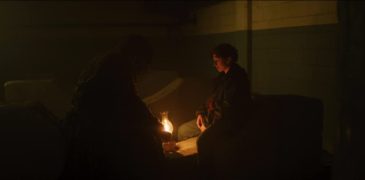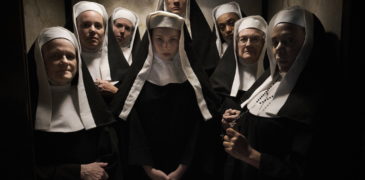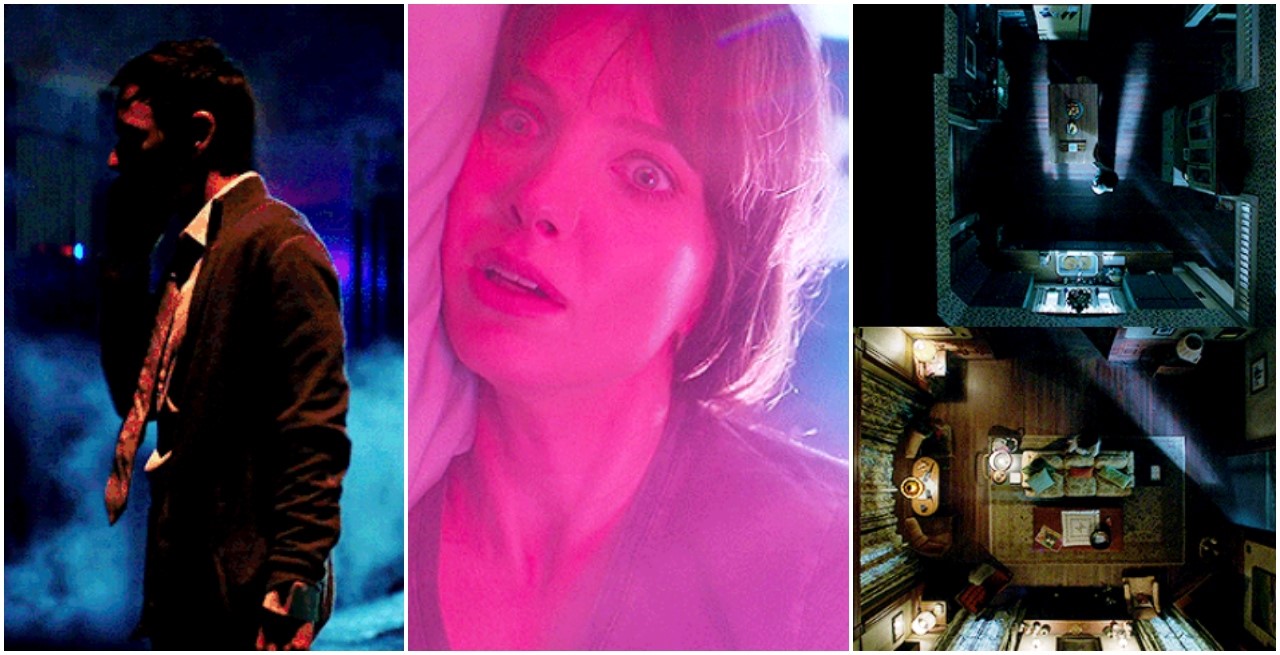
***As a disclaimer, there are mild spoilers in this review, but I have tried to keep them to a minimum.***
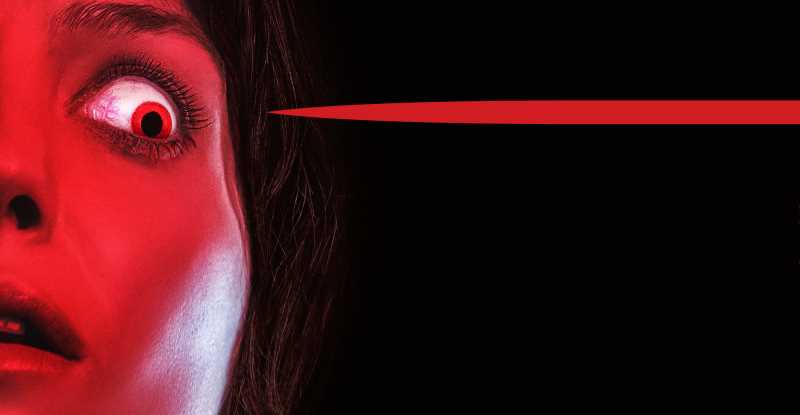
Paralyzed by fear from shocking visions, a woman’s torment worsens as she discovers her waking dreams are terrifying realities.
A lot of the buzz around this movie involves its mash-up of many beloved horror genres, with most commentary focused on the giallo and slasher aspects. However, 80s B-horror, Japanese cinema ghost stories, and the American atmospheric jump scare horror James Wan is famous for all swirl in this intricate concoction. Love it or hate it, this movie is incredibly unique in its re-imaging of what horror can be.
Viewers will realize within minutes that the film they have just committed to watching is very different from what the trailer has sold them. Far from the typical James Wan The Conjuring-style “evil entity in the house” story, we are shown a malevolent but very tangible being referred to as “Gabriel.” The opening sequence presents a strange and supernatural premise that is beyond the typical spooky ghost story, but holds its punches and resists fully showing us too much of Gabriel. We do see a peek, but it leaves more questions than answers.
The story then jumps to our protagonist Madison, and switches from the action-packed flurry of violence of the opening scene to an atmospheric tone Wan fans will be more familiar with. The frenzied camera work and quick cuts transition into slow-panning wide frame shots, common in ghost stories that leave you searching the frame for baddies hiding in plain site. There are also tilted frames that indicate a distortion of reality. Madison’s story begins like many haunting tales, but the cinematography subtly begins hinting at so much more.
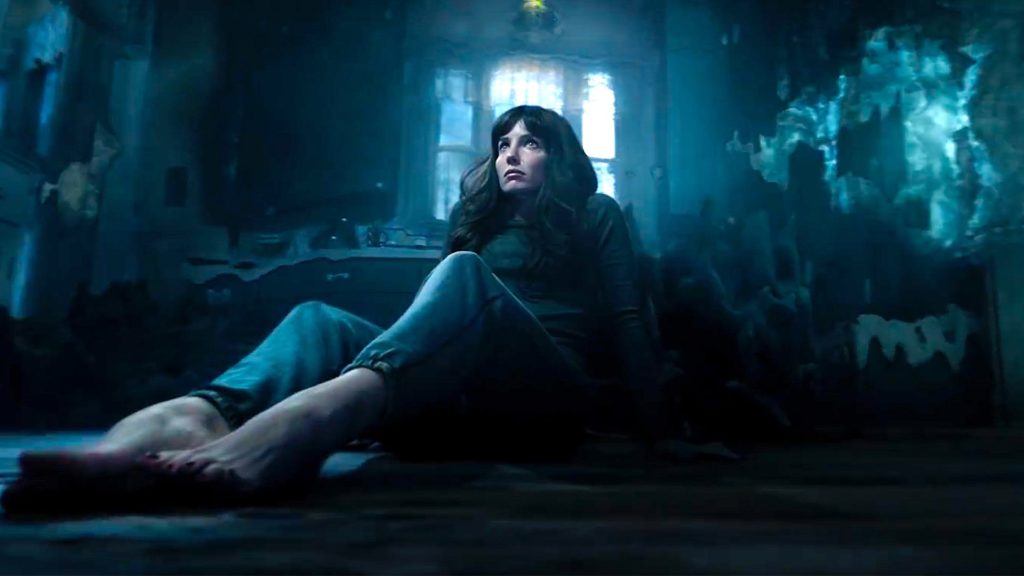
In Tenebrae, we see the killer’s acts of violence as they happen, with Argento’s camerawork utilizing a first person perspective that places the viewer in the eyes of the killer. This perspective gives the chill of watching a murder, being aware that you are watching a murder and being unable to stop it. Wan cleverly achieves the same outcome, but replaces the first person perspective with Madison’s third third-person perspective of the grisly murders in the form of psychic visions. The walls literally melt away and reform in a breathtaking use of computer graphics as Madison goes from her comfy home to a bloody scene playing out before her. Both methods methods create the same voyeurism, with the visuals immediately telling us that a murder is coming, and only the means by which is happens is to be revealed.
There are a few moments when giallo-style color is used as well, specifically with gorgeous greens and reds, but overall it is more subdued than other recent horror films utilizing this iconic style. Yet, so many other different styles of color and framing/camerawork are utilized that I would almost say the only true negative to the film is that the cinematography, although much of it is incredible, doesn’t feel cohesive. The camerawork jumps all over the place, evoking so many genres that it draws attention to the shift in a way that is jarring.
However, the cinematography in one scene is absolutely breathtaking in its inventiveness. As Madison flees through home, the camera turns from ground level to a perspective looking down from the ceiling, then follows her in a smooth almost robotic motion, seemingly from the second floor ceiling. We see the rooms of the second floor as she passes under them, then meet up with her to continue up the stairs, as though we are watching her through a roofless doll house as she flees in terror. Wan is the master at using domestic spaces to shape terror, specifically in Victorian revival style homes like Madison’s. The aerial cam took this to a whole new level.
Wan is also adept at using family and relationship dynamics to compound tensions. He manages a large cast of important players in this film without any of them feeling unnecessary. Madison has a devoted sister named Sydney that stays by her side as everything unfolds, adding to the plot by taking up her case and doing her own research. The story also involves the police, specifically two detectives, also hailing back to Argento’s films like Tenebrae, working the case from a procedural perspective. Towards the middle, once all the players have been introduced, we have an intricate but accessible plot with many moving pieces. Information is revealed to the viewer as it is discovered by the characters, and manages to feel natural while avoiding shoddy exposition.
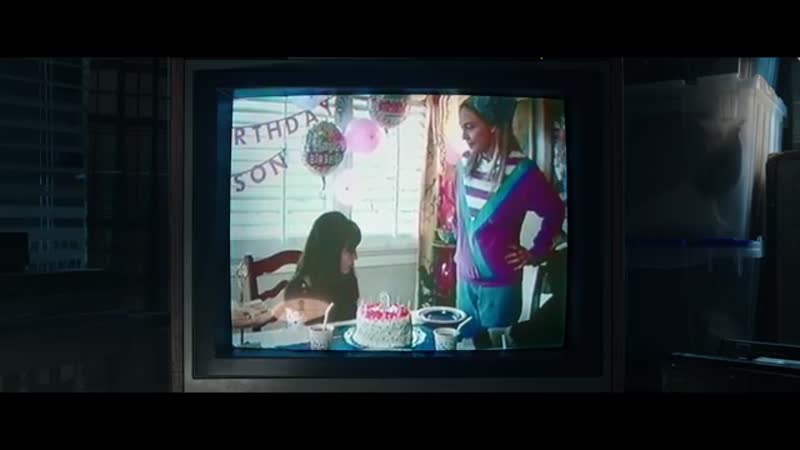
This is where a Ju-On (2002) and Ringu (1998) style “hunting for the source before its too late” sequence of events plays out, as Sydney locks onto the origins of Madison’s connection to Gabriel. Layered over this is Madison’s experiences in another location, as well as the detectives doing their investigation. The film begins to approach its climax, like a roller coaster that has reached nauseating heights right before a drop. What else is the triggering item but a VHS tape and a family secret?
There are so many definitive moments where Malignant whips the viewer around, and turns everything upside down. The most memorable being towards the end where answers are given in a deliciously visual fashion, and then action-packed mayhem kicks off. It could almost be called a fourth act, and though it has been polarizing for many fans, it hails back to the opening 10 minutes but exhibits a Matrix-like sheen in how the action is portrayed. It is so unexpected, but full of glee in its wanton violence.
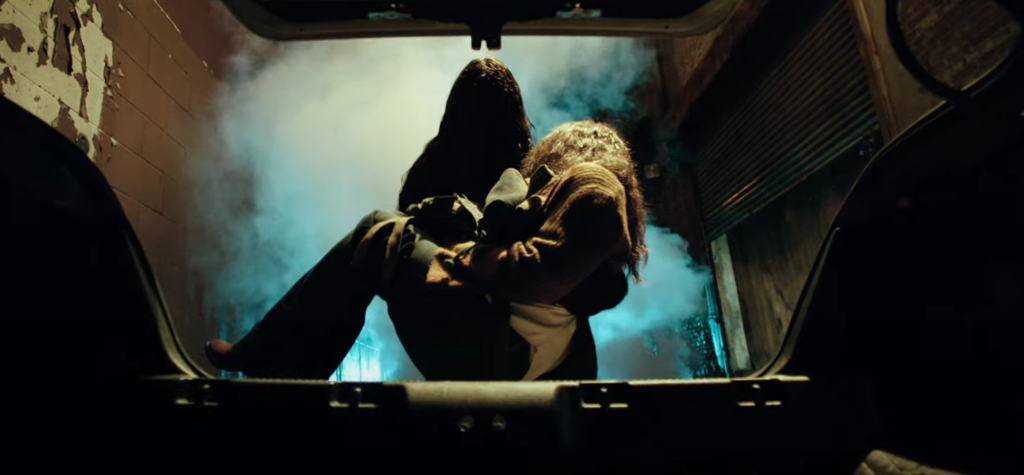
Just like the beginning, no time is wasted on a dwindling end and wrapping things up neatly with the main characters reflecting on what they have experienced. It does what it needs to do… then just ends. The film sets itself up nicely for a sequel, which we can only hope will come some day. Wan has ventured into new territory, and though it may seem like a stumble for some, pushing the boundaries of a genre is always uncomfortable.
What is most enjoyable about Malignant is that you just never know where it it is going to go. Predicting a few major things may come easy, especially if you are a fan of 80s B horrors, but at no point is it easy to guess everything or how it will play out. A large part of this is due to his homage to so many disparate genres; you never get a chance to settle into familiar conventions. For the well-versed horror enthusiasts who find it hard to be surprised, this is the film for you. Love it or hate it, Malignant is a wild ride from beginning to end.

More Film Reviews
1996’s Scream was a game-changer for the slasher genre. By playing with well-established conventions, the movie directly engaged the audience in a conversation about what they were watching and toyed… Two dysfunctional brothers struggle to get by after the death of their parents. The younger counterpart is left in the care of his older brother who is slowly yet surely… When I saw the poster for Agnes, I was really hoping it was going to be a Nunspolitation film, because man, those need to make a comeback. Spoiler, it isn’t… Sweet Home, a South Korean horror TV show based on a webtoon of the same name, is a story about an epidemic that causes humans to transform into horrific monsters,… Cosmic Dawn is one of those films that is difficult to summarize, wherein the plot is not nearly as important as the experience. Furthermore, the production fluctuates between amateurism and… Having come from lower class and immigrant families, four friends make one last heist led by their leader, Chaz (Malachi Pullar-Latchman) to walk away with a small fortune to start…Cherry Falls (2000) Film Review – Be True to Your School
Slapface (2021) Film Review – Dark Coming-of-Age Horror
Agnes (2021) Film Review – A Journey of Faith
Sweet Home (2020) Series Review: Horror, Tragedy and Monsters
Cosmic Dawn (2022) Film Review – Drink the Canadian Kool-Aid!
Hounded (2022) Film Review – Release the Hounds!

A study in contrasts, Aubry is a lover of knitting and rescuing strays, but also most likely the one cheering loudest during gory horror scenes.
Someday she’s going to get too excited and accidentally stab herself with a knitting needle.

